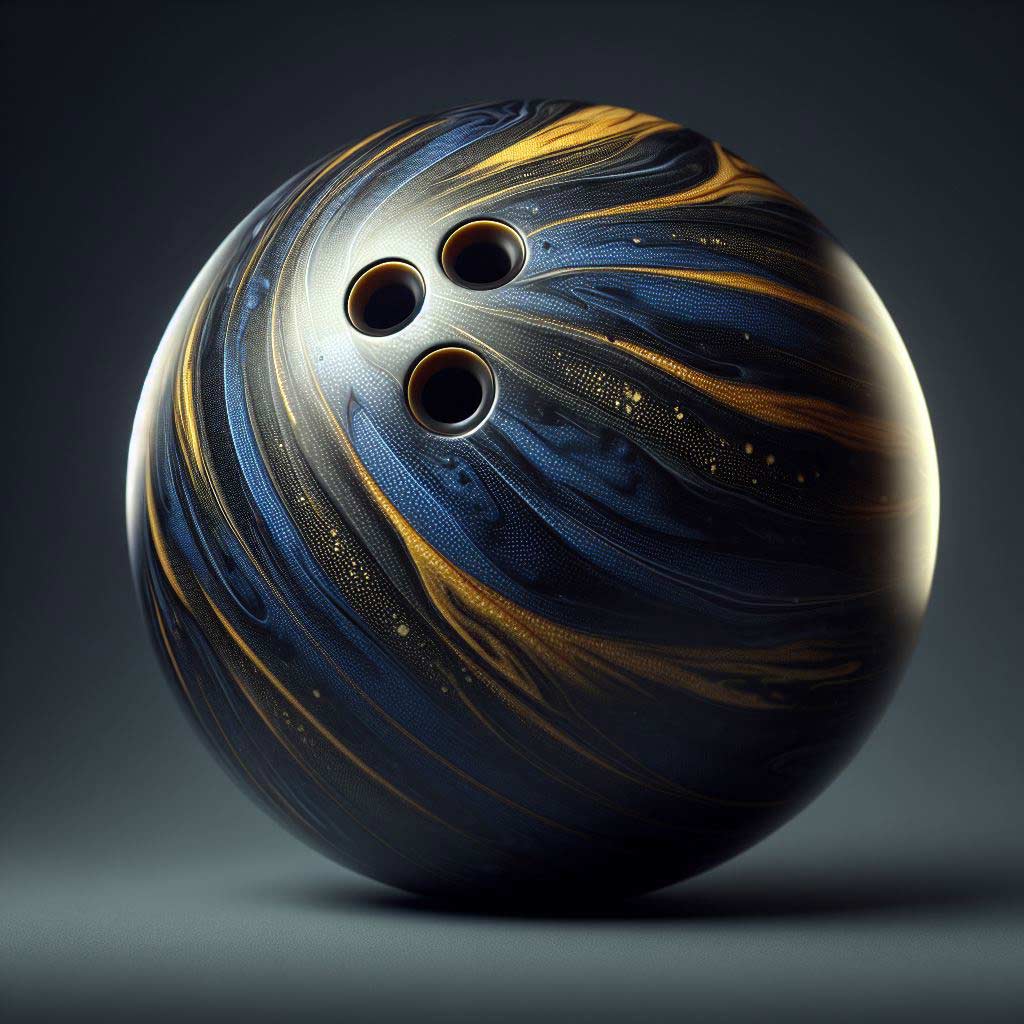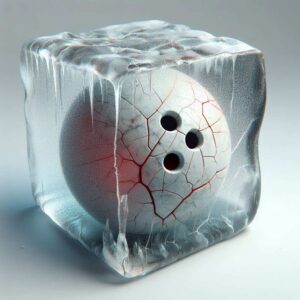As an avid bowler, you know that the right ball can make all the difference in your game. One type of ball that has gained significant popularity in recent years is the urethane bowling ball. Urethane balls offer a unique blend of performance characteristics that can give bowlers a valuable tool to have in their arsenal.
But with so many urethane ball options on the market, how do you know which one is the best fit for your game? In this comprehensive guide, we’ll dive deep into the world of urethane bowling balls – exploring their history, key features, top recommendations, and strategies for incorporating them into your gameplay.
Understanding Urethane Bowling Balls
Urethane bowling balls first emerged on the scene in the 1970s, providing bowlers with an alternative to the dominating reactive resin and plastic ball types of the era. Urethane’s unique chemical composition gave it some distinct performance advantages.
Unlike reactive resin, which is designed to hook aggressively on the back end of the lane, urethane balls tend to have a smoother, more controllable arc.
This makes them well-suited for drier, more challenging lane conditions where over-hooking can be problematic. Urethane also generally has a lower RG (radius of gyration) and higher differential than plastic balls, translating to more hook potential.
The cover stock of a urethane ball is composed of – you guessed it – urethane. This material is known for its durability, allowing urethane balls to maintain their performance characteristics for longer compared to reactive resin counterparts. Urethane also tends to be less affected by oil patterns, providing bowlers with a more consistent ball reaction.
Another key benefit of urethane is its versatility. Urethane balls can be drilled and customized to suit a wide range of bowling styles, rev rates, and lane conditions. This makes them a valuable addition to any serious bowler’s equipment arsenal.
Of course, the tradeoff with urethane is that it doesn’t generate as much overall hook as high-performance reactive resin balls. But for the right application, urethane can be an extremely effective weapon in a bowler’s arsenal.
Top Recommended Urethane Bowling Balls
Now that we’ve covered the basics of urethane bowling balls, let’s take a look at some of the top models currently on the market:
-
Brunswick Cutting Edge Urethane
- Core Type: Symmetric
- Cover Stock: Urethane
- Typical Ball Motion: Smooth, controllable hook
- Use Case: Ideal for dry to medium oil conditions, great for spares
The Cutting Edge is one of Brunswick’s most popular urethane offerings. Its symmetric core and medium RG provide a smooth, consistent ball motion that works well on challenging lane conditions.
Bowlers with moderate to high rev rates will appreciate the Cutting Edge’s ability to read the front part of the lane and maintain a controllable backend motion.
-
Storm Pitch Black Urethane
- Core Type: Symmetric
- Cover Stock: Urethane
- Typical Ball Motion: Strong, angular hook
- Use Case: Medium to heavy oil conditions, great for strike shots
The Pitch Black from Storm is known for its robust, angular hook shape. Its symmetric core and higher differential give it more overall hook potential compared to some other urethane balls. This makes it a great option for bowlers who want to weaponize urethane on medium to heavier oil patterns.
-
Roto Grip No Rules Urethane
- Core Type: Symmetric
- Cover Stock: Urethane
- Typical Ball Motion: Smooth, arcing hook
- Use Case: Versatile for various conditions, ideal for spares
Roto Grip’s No Rules Urethane is praised for its exceptional versatility. The symmetric core and medium RG create a smooth, controllable motion that works well across a wide range of lane conditions.
With its ability to read the front of the lane and control the backend, the No Rules Urethane is a great all-around option for both strikes and spares.
-
Ebonite Game Breaker 4 Urethane
- Core Type: Symmetric
- Cover Stock: Urethane
- Typical Ball Motion: Smooth, controlled hook
- Use Case: Dry to medium oil, effective on spares
Ebonite’s Game Breaker 4 Urethane is renowned for its incredibly smooth and predictable ball motion. Its symmetric core design and medium RG create a reliable, controlled hooking action that’s particularly useful on drier lane conditions. Bowlers who value consistency and precision will appreciate the Game Breaker 4’s performance.
-
Storm Tropical Surge Urethane
- Core Type: Symmetric
- Cover Stock: Urethane
- Typical Ball Motion: Strong, angular backend
- Use Case: Heavier oil patterns, excellent for power players
The Tropical Surge from Storm is a high-performance urethane ball built for power. Its symmetric core and higher differential produce a strong, angular backend motion that can handle heavier oil conditions. This makes it an excellent choice for bowlers with high rev rates who need a urethane ball that can stand up to challenging lane environments.
Factors to Consider When Choosing a Urethane Ball
With so many quality urethane bowling ball options on the market, how do you determine which one is the best fit for your game? Here are some key factors to consider:
Bowling Style and Rev Rate
Your individual bowling style and rev rate play a significant role in selecting the right urethane ball. Bowlers with lower rev rates may prefer a urethane ball with a lower RG and differential, as this will give them more hook potential. Higher rev rate players, on the other hand, may benefit from a urethane ball with a higher differential for a stronger, more angular backend motion.
Lane Conditions
The type of lane conditions you typically encounter is another crucial factor. Urethane balls generally perform best on drier, more challenging lane conditions where aggressive reactive resin balls may over-hook. If you bowl on a lot of medium to heavy oil patterns, you’ll want to look for a urethane ball with a stronger, more angular hook shape.
Ball Weight and Fit
As with any bowling ball, the weight and fit of the urethane ball is essential. Make sure to choose a ball weight that you can comfortably control and generate power with. And don’t forget to work with a qualified pro shop to ensure a proper, comfortable fit for your hand.
Budget and Value
Urethane bowling balls tend to be more expensive than entry-level plastic balls, but they also offer superior performance and durability. Consider your budget and look for urethane balls that provide the best value in terms of quality, features, and long-term usability.
Drilling and Maintaining Urethane Balls
Once you’ve selected the perfect urethane bowling ball for your game, it’s important to ensure proper drilling and ongoing maintenance to maximize its performance.
Drilling Layout and Fit
Working closely with an experienced pro shop, you’ll want to determine the optimal drilling layout for your hand size, grip strength, and bowling style. This will ensure a comfortable, secure fit that allows you to impart the desired reaction on the ball.
Many pro shops recommend a more open drilling layout for urethane balls compared to reactive resin. This can help create a slightly smoother, more controllable motion on the back end of the lane.
Cleaning and Upkeep
Proper cleaning and maintenance is crucial for preserving the performance of your urethane bowling ball over time. After each use, be sure to wipe down the ball with a clean microfiber cloth to remove any oil or dirt buildup.
Periodically, you’ll also want to deep clean the ball using a specialized bowling ball cleaner. Avoid using harsh chemicals or abrasives, as these can damage the ball’s cover stock. And remember to store your urethane balls in a cool, dry place to prevent any warping or cracking.
Replacing Urethane Balls
Like any high-performance bowling equipment, urethane balls will eventually need to be replaced as their performance degrades over time. Pay close attention to changes in the ball’s motion, hook potential, and overall reaction. If you notice significant deterioration, it may be time to consider investing in a new urethane ball.
Incorporating Urethane Balls into Your Arsenal
Now that you have a solid understanding of urethane bowling balls and how to care for them, let’s discuss some effective strategies for incorporating them into your equipment arsenal.
Dry Lane Specialists
One of the primary use cases for urethane balls is on drier, more challenging lane conditions. When reactive resin balls are over-hooking, a well-chosen urethane ball can provide the control and predictability you need to strike consistently. Urethane’s smoother, more manageable hook is ideal for navigating dry or burnt lane surfaces.
Spare Shooting Weapon
In addition to strike shots, urethane balls can also be incredibly valuable for picking up difficult single-pin spares. Their controlled, predictable motion makes them excellent at cutting through the pins with precision. Bowlers who struggle with overthrows or over-hooking on spare attempts may find that a urethane ball is the solution.
Blending with Other Ball Types
Many elite bowlers choose to blend urethane balls with other types of equipment in their arsenal. For example, they may use a urethane ball as their primary strike ball on drier conditions, while relying on high-performance reactive resin balls for heavier oil patterns. Strategically incorporating urethane into your equipment mix can give you valuable versatility on the lanes.
Transitioning to Urethane
If you’re new to using urethane balls, the transition process may take some time and experimentation. Start by using urethane balls primarily on your tougher, drier shots before gradually incorporating them into your strike game. Pay close attention to how the ball reacts on different lane conditions and make adjustments as needed. With practice and patience, you can seamlessly integrate urethane into your bowling repertoire.
Conclusion
Urethane bowling balls offer a unique blend of performance characteristics that can be a valuable asset in any bowler’s equipment arsenal. Whether you’re looking to tame challenging lane conditions, improve your spare shooting, or diversify your ball options, the right urethane ball can take your game to new heights.
By understanding the key features of urethane, exploring top model recommendations, and implementing smart strategies for drilling, maintenance, and game-day use, you’ll be well on your way to unlocking the full potential of urethane technology. So why not give it a try and see how a urethane ball can elevate your bowling prowess?





